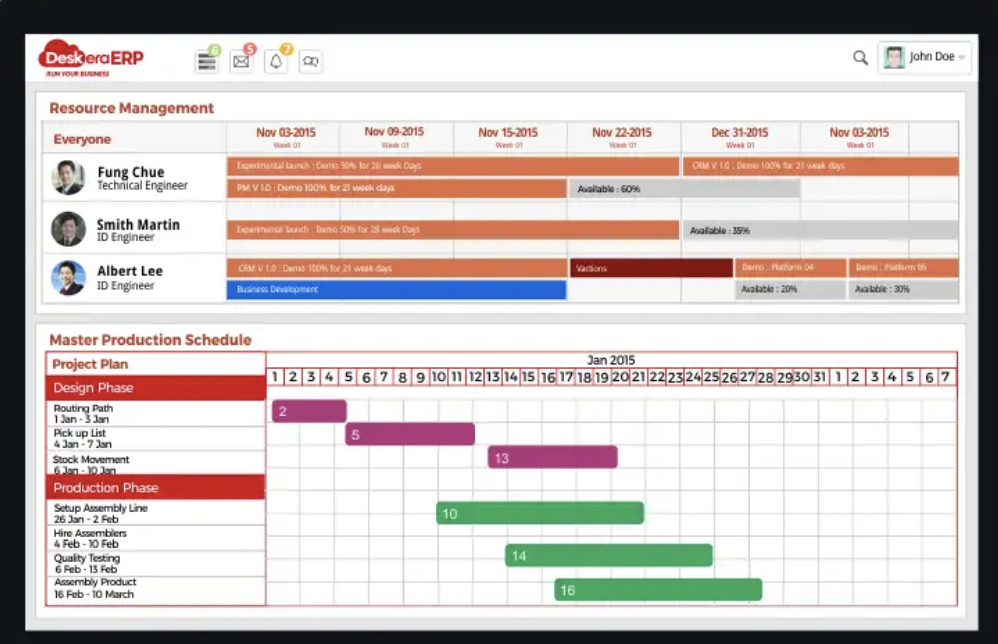MRP Software: Revolutionizing Business Operations

MRP software, short for Material Requirements Planning software, has become the backbone of efficient business operations in the 21st century. As technology continues to advance, the need for streamlined processes in manufacturing, retail, and various industries has never been more crucial. This article delves into the intricate world of MRP software, exploring its evolution, key features, benefits, implementation processes, and future trends.
Evolution of MRP Software
In the early stages of industrialization, businesses struggled with manual tracking of materials and production schedules. The inception of MRP software marked a revolutionary shift, automating these processes and providing a comprehensive solution for managing resources. Technological advancements over the years have refined and expanded the capabilities of MRP software, making it an indispensable tool in today’s fast-paced business environment.
Key Features of MRP Software
Inventory Management
One of the core features of MRP software is its ability to efficiently manage inventory. Through real-time tracking and analysis, businesses can optimize stock levels, reducing the risk of overstock or stockouts. This feature contributes significantly to cost control and operational efficiency.
Bill of Materials (BOM)
MRP software streamlines the creation and management of Bill of Materials, a crucial component in manufacturing. The software ensures accuracy in defining the materials, components, and quantities required for each product, facilitating a smooth production process.
Production Scheduling
Efficient production scheduling is a key determinant of overall operational success. MRP software allows businesses to create detailed production schedules, taking into account resource availability, lead times, and order priorities. This results in improved production efficiency and timely delivery of products.
Benefits for Businesses
The adoption of MRP software brings forth a myriad of benefits for businesses, irrespective of their size or industry.
Improved Efficiency
By automating manual processes and providing real-time data, MRP software enhances operational efficiency. This allows businesses to respond swiftly to changing market demands, minimizing delays in production and order fulfillment.
Cost Reduction
Effective inventory management and production planning contribute to significant cost reductions. Businesses can minimize excess inventory holding costs, optimize resource utilization, and reduce the likelihood of production bottlenecks.
Enhanced Decision-Making
MRP software provides valuable insights through data analysis, empowering businesses to make informed decisions. From supplier selection to production planning, decision-makers can rely on accurate and up-to-date information to steer the company in the right direction.
Implementation Process
Implementing MRP software can be a transformative process for any business. Here’s a step-by-step guide to ensure a smooth transition:
- Assessment of Current Processes: Conduct a thorough analysis of existing processes and identify areas that can benefit from MRP software.
- Team Training: Invest in comprehensive training programs to familiarize employees with the new system. This minimizes resistance to change and ensures optimal utilization.
- Data Migration: Transfer existing data to the new system accurately. Data integrity is crucial for the success of MRP software implementation.
- Customization: Tailor the software to meet specific business needs. Customization should strike a balance between meeting unique requirements and maintaining standardization.
- Testing Phase: Conduct extensive testing to identify and resolve any issues before full implementation. This minimizes disruptions to regular business operations.
- Gradual Rollout: Implement the software gradually, starting with one department or process before expanding to the entire organization. This allows for smoother integration.
- Continuous Monitoring and Improvement: Regularly monitor the system’s performance and gather feedback from users. Use this information to make continuous improvements and updates.
MRP Software vs. ERP Software
While MRP software focuses on the management of material resources, Enterprise Resource Planning (ERP) software encompasses a broader range of business processes. MRP and ERP are complementary, with MRP often being a module within the larger ERP framework.
Understanding the distinction between the two is crucial for businesses seeking comprehensive solutions for their operations. MRP handles the intricacies of production and inventory, while ERP integrates these processes with other facets like finance, human resources, and customer relationship management.
Industry-specific Applications
MRP in Manufacturing
Manufacturing industries have greatly benefited from MRP software. The ability to synchronize production schedules with material availability has minimized waste, improved efficiency, and ultimately resulted in higher profit margins.
MRP in Retail
In the retail sector, MRP software plays a vital role in inventory management and order fulfillment. Retailers can optimize stock levels, reduce out-of-stock situations, and enhance the overall customer experience.
Selecting the Right MRP Software
The success of MRP software implementation hinges on choosing the right solution for your business. Consider the following factors during the selection process:
- Scalability: Ensure the software can scale with your business growth.
- User-Friendly Interface: Opt for a system with an intuitive interface to facilitate user adoption.
- Integration Capabilities: Choose software that can seamlessly integrate with other systems used in your business.
- Vendor Reputation: Research the reputation of the software vendor, including customer reviews and case studies.
- Cost vs. Value: Assess the overall value the software provides in relation to its cost.
Case Studies of Successful Implementations
[Company X]: Transforming Manufacturing Operations
Company X, a leading manufacturer, successfully implemented MRP software, resulting in a 20% increase in production efficiency and a 15% reduction in production costs
